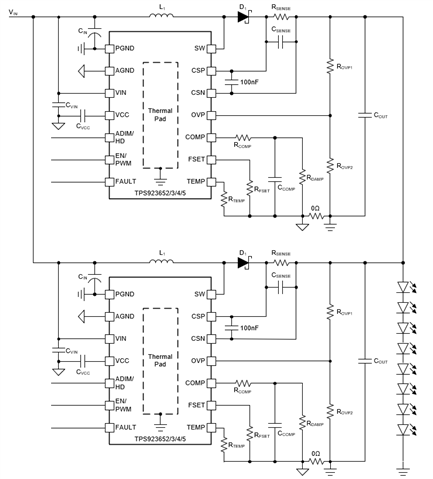Other Parts Discussed in Thread: TPS923652, TPS922052, TPS92640
Hello guys,
One of my customers is considering using TPS923654 for their new products.
At this moment, they have the following questions.
Could you please give me your reply?
Q1.
Can TPS923654 be used for LED lighting with Vin=24V, Vout(Vf)=50V and Io=3.5A conditions as boost topology?
Q2.
Can TPS923654 be used for LED lighting with Vin=60V, Vout(Vf)=50V and Io=3.5A conditions as buck topology?
Q3.
They want to calculate the inductor value for LED lighting system which can operate with the conditions in Q1 and Q2.
They know that it is possible to calculate it with equation 12 on page 17 of TPS923654 datasheet.
But they want to know how to determine fSW.
What frequency is general for fSW?
Is it 1.2MHz like a describing in datasheet?
Or lower?
Your reply would be much appreciated.
Best regards,
Kazuya.



